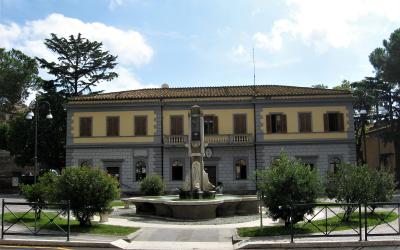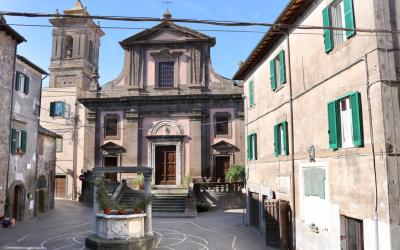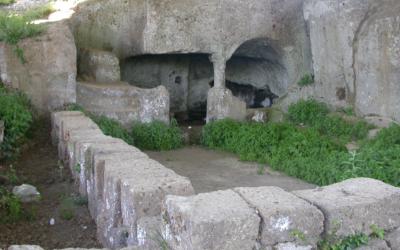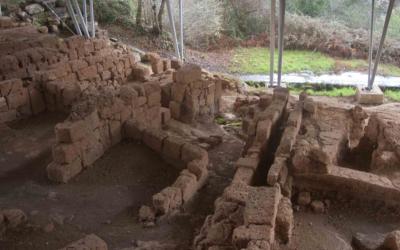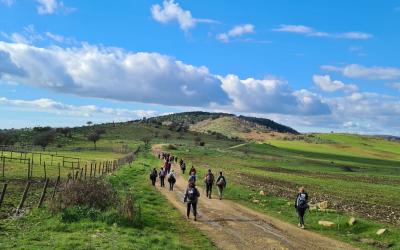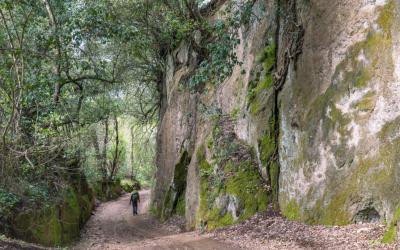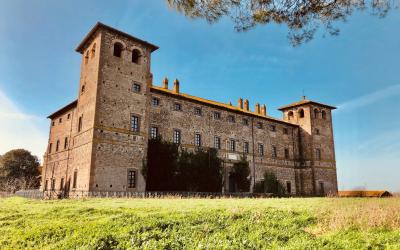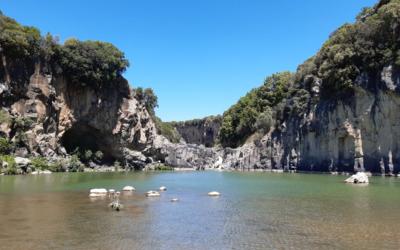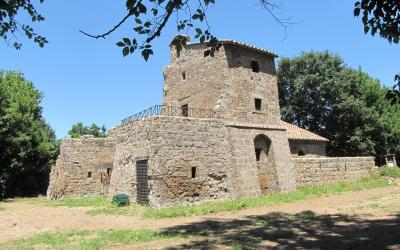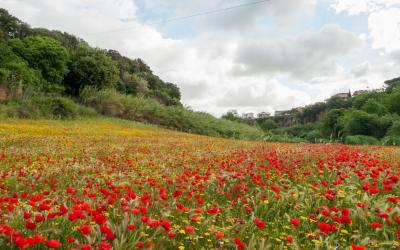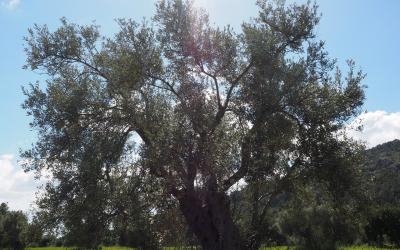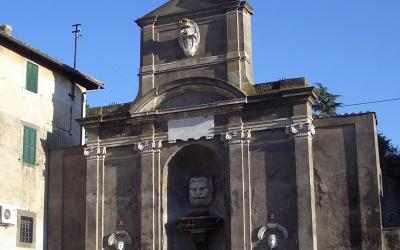Seventh stage of the Cammino 103 of Tuscia: from Civitella Cesi to Monte Romano crossing the archaeological area of San Giovenale.
A route that crosses the splendid Tuscia from the Tiber to the Tyrrhenian Sea, on foot or by MTB.
The wildest stage of the entire Camino. Leaving the inhabited center of Civitella Cesi, following the signs, you cross the archaeological area of San Giovenale, where a necropolis and a well-preserved inhabited center of the Etruscan archaic period have been found; the whole area extends over a plateau where there are the remains of the small church consecrated to Juvenal. Continue meeting the track of the abandoned Orte Civitavecchia railway. The Cammino 103 Tuscia enters the territory of the municipality of Monte Romano in the locality of "cancelletto dei Biedani" so called due to the presence on the Anatrella ditch, which for a stretch acts as a natural border between Monte Romano and Blera, of a small wooden gate on the ford of the ditch. Continuing along the signs of the path, after about 300 meters, you arrive at "la Mola" where in a plateau along the Mignone river you can see the ruins of a mill built in 1700 by the Santo Spirito hospital for the inhabitants of the colony farm of Monte Romano. At the end of the 19th century the mill was no longer in operation, currently, in addition to the wall structures, you can still see the water supply channels and the barrier slab on the river, located near the ruins of a bridge that connected the locality with the Casalone located in the Municipality of Tolfa. Continuing along the route, you skirt the Mignone river on the left and the "Crognolo" forest on the right, an oak and Turkey oak forest which owes its name to the numerous presence of the dogwood plant, once used in carpentry for its compactness and hardness and used by butteri to build their typical sticks. Leaving the wood, the path climbs along what is currently called the "Mignone valley" an uncontaminated valley of important naturalistic value where the only evidence of anthropic presence is the breeding in the wild of Maremma cattle and horses. The valley offers an unforgettable sight in the spring months when the hundreds of wild pear trees are in bloom. Along the way it is possible to see the "Fontanile del Crognolo" made of limestone with exposed face built in the early 1900s, currently without water. Before arriving at the Crognolo gate, placed on the wooden fence that delimits the pasture of the Mignone valley from the arable land of the "Calisto" locality, about one hundred meters on the right, on a small hill you can observe the structures of a Roman cistern in operation cement composed of a single room and a rectangular plan (3.20 x 12.70 m). On the plateau of the hill can be seen clay fragments which attest to the presence of a Roman villa rustica from the 1st-2nd century AD. From this panoramic point it is possible to see all the beauty of the Mignone valley from above. After passing through the gate, the route enters the "Calisto" locality which takes its name from Pope Calisto III, who in 1456 mortgaged the vast Monte Romano estate in favor of the Hospital of S. Spirito to finance a Crusade aimed at the liberation of Constantinople fell into the hands of the Turks in 1453. Descending along the road of Calisto, the route enters the road of the "Rotonda" which runs alongside the hill of the same name and on the top of which there are the remains of a wall that delimits the area on which the fortress of Monte Romano (arx Mons Romans) datable to the XIII century. Currently, a picnic area has been created inside the walls. . Continuing along Path 103 which follows the Rotonda road, you reach the small-sized "Torrione" fountain, built in 1915, which owes its toponym to the presence of a medieval watchtower, now completely renovated. After about one km you will arrive at the inhabited center of Monte Romano built starting from 1600. On 18 July 1664 with the Bull of Pope Alexander VII the Ospedale del Santo Spirito was authorized to rebuild the Castle of Monte Romano in a more suitable place, to call you new inhabitants and to grant them areas to build houses and land to cultivate in perpetual concession. Only in 1851 did the Santo Spirito renounce the baronial jurisdiction with the consequent cessation of the feudal regime and the erection of Monte Romano as a free municipality. Among the things to see are: the Fontana del Mascherone from 1770, the new church from 1750, the small church from 1600, the four-faced clock from 1730 and what used to be the "Calino" village from 1770, located along what is now Via Vittorio Emanule, composed of a central nucleus used as a granary and two side wings built for the settlers who came to live in Monte Romano. By booking at the Municipality of Monte Romano it is possible to see the small civic museum with Etruscan-Roman finds.


